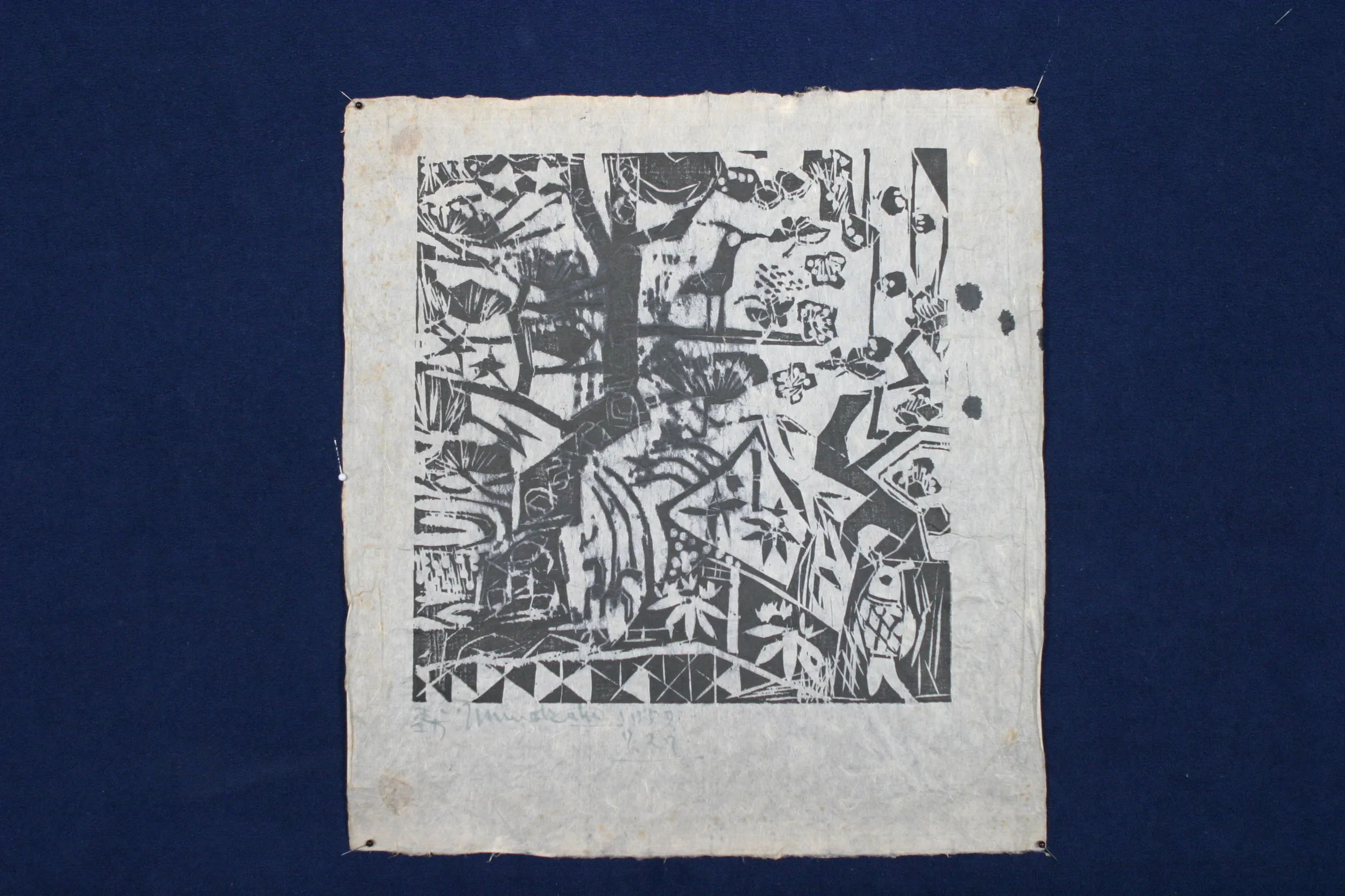GUEST: We went to a gentleman's house to buy some old toys. And he carried me out in a... a shed he's got, and this was hanging on a nail in the shed. He didn't want to sell it, so I called him two more times. He carried it to several antique shops and then called me back and told me what he would take for it. He said that he got it at the end of the Second World War, but he didn't say where.
APPRAISER: You got to tell me how much you paid for it.
GUEST: $700.
APPRAISER: And how long ago was this?
GUEST: About three years.
APPRAISER: Someone pointed out earlier, they said, "You know, the frame is nice, but it's got some damage." And they were pointing to this area and some of the other areas that look like they're cracked and split. That's not damage. That's original to the frame. The frame is what we call a ruined columns frame.
GUEST: Oh, okay.
APPRAISER: And originally, it would have had all those splits built into it to make it look like ruined columns that have been overgrown. It's original to the plaque in the center. The whole thing was probably made about 1885, when this particular style was very popular. The only thing bad I'd say about it is, part of the frame, and that it's been painted with gold radiator paint or something. Someone's had a go and sprayed it, and that's unfortunate. The best part of it is the plaque in the center. It's a porcelain plaque made in Berlin, in Germany. And there's a history of porcelain painting in Berlin that goes back a couple of hundred years. But at this period, they really got it right. They really knew how to paint figures, and especially beautiful, alluring young women. And she's got all the right ingredients-- the scale, the quality of the painting, the subject matter-- to make her a very valuable Berlin plaque. On the back of her, she has the initials KPM. That tells us it was made in Berlin, and at the Royal Porcelain Works of Germany. KPM plaques are all valuable, and their value depends on the subject matter and the scale, and the condition and so on. This is about as good as they get. Everything's great about the porcelain, and that original frame is really going to add to it. I think, if you spend the time and the trouble and the money to have the frame restored back to its original condition-- which was probably wood with some gilding on it-- that could be expensive, but it'd be worth it. In this condition, at auction, it's worth over $10,000.
GUEST: Oh, Lord!
APPRAISER: We think it could bring as much as $12,000 or $14,000.
GUEST: That's unreal. I didn't... I was thinking a lot less.
APPRAISER: I would think, with $1,000 worth of restoration costs in the frame, that $1,000 could be well spent and even elevate another couple of thousand.
GUEST: All right!








